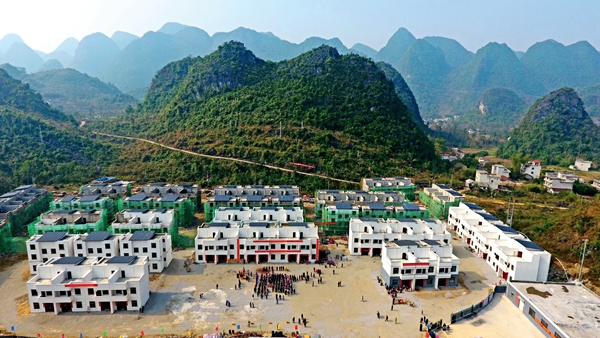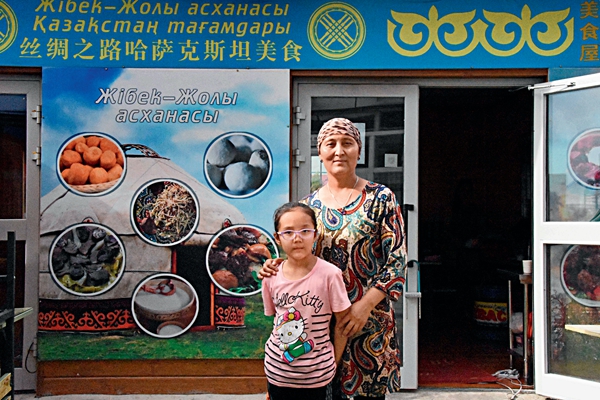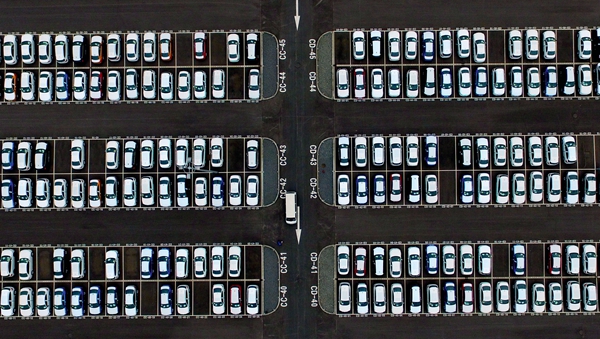By staff reporter HOU RUILI
By staff reporter HOU RUILI
XI Jinping, general secretary of CPC Central Committee, specified coordinated development as the key to success during the 13th Five-Year Plan period from 2016 to 2020. Under the context of an underdeveloped economy, speed was our main priority. But having reached a certain stage we should now coordinate various factors and focus on comprehensive efficiency. This will avoid the “bucket effect” manifest in deeper social conflicts. We should recognize the significance of coordinated advancement in promoting balanced, coordinated, and sustainable development.
Starting out with heavy and chemical industries, and relying on state-owned enterprises and a planned economy, from the 1950s to the 1970s the newly founded People’s Republic of China accumulated funds and built an independent and relatively complete industrial system. But China was far from well off at that time, and the Chinese people’s egalitarian but poor life gave them food for thought. It was not until the reform and opening-up drive in 1979 that China opted for efficiency over equality, so unleashing human creativity and social productivity. After over 30 years of development, certain regions were more affluent than others. It was two years ago that China embarked once more on the road to common prosperity, through coordinated development.
Coordinating Urban-Rural Development
The rural reforms that began in 1984 greatly motivated Chinese farmers and triggered rural industrialization. The nurturing of township enterprises was a significant undertaking in the course of China’s industrialization. The year 1993 saw the employed population of township enterprises reach 120 million, far outstripping that of state-owned enterprises. The output value of township enterprises accounted for half of the national total. And the previously fragmented relationship between industrialization and urbanization became a duet. As a result of steady industrialization, at the beginning of the 1990s rural surplus laborers flocked to the city at a rate of 20 million to 30 million per year. Chinese farmers that had constituted 80 percent of the total population gradually left agriculture to work in industry, so accelerating industrialization and urbanization and promoting the tertiary industry.

The inevitable drop in labor demands and the ever growing pressures of urban life, however, caused numbers of migrant workers to plummet. To close the urban-rural gap, therefore, the government proposed enabling farmers to change their status to that of urban residents. Since 1998, Yaozhuang Village in Jiashan County, Zhejiang Province in East China, has steadily improved its infrastructure. These changes for the better, apparent in roads, telecommunications, and hygiene and education standards, are attributable to the building of industrial parks specializing in photovoltaic energy and precision machinery. However, agricultural modes of production remained the norm in neighboring villages.
The Song family formerly lived in a house built at the end of the last century. In 2010, in response to the government’s call for rural dwellers to relinquish their rural residences, the entire family left their old home. In 2013 they moved into a 380-sq-m duplex apartment, so becoming residents of Taoyuan New Village. “We rented out the third and fourth floors for RMB 2,400 per month and contracted out six mu (about 0.4 hectare) of farmland. Each mu earns us RMB 1,200 per year,” lady of the house Song Yuehong said. Her husband is a carpenter and her son is a factory worker. They now live a comfortable life and earn steadily rising incomes.
Life is generally more convenient for the family since they moved into the new community. The primary school, hospital, supermarket, and bank are all within walking distance. In 2013 the Mobile Service Cars for the Elderly started operating in Jiashan County, providing free door-to-door free services such as health maintenance, taking blood pressure, and delivering medicine. So far 10 service cars have benefited over 10,000 elderly people.

Thanks to coordinated development, rural residents of Jiashan County have the same ease of access to public services as urban residents. An integrated water supply system supplying potable water to both urban and rural residents was installed in Jiashan County in 2009. And the One-Card System, with which villagers can access all medical services located within 20 minutes’ walking distance, was introduced in 2016.
Implementing urban-rural integration nationwide is no easy task. The government has nevertheless announced that 100 million people in central and western China will join in urbanization by 2020, according to the proximity principle. This move is aimed at narrowing the gap between the eastern and central & western regions.
Equalizing the incomes of urban and rural residents is crucial to closing the rural-urban gap. In recent years, the per capita growth of farmers’ incomes has surpassed that of urban residents. And the rural-urban resident income gap narrowed from 3.3:1 in 2009 to 2.8:1 in 2014. Zheng Xinli, former deputy director of the Central Policy Research Office and executive president of China Association of Policy Science, stated: “To maintain this momentum we need to fundamentally improve agricultural labor productivity. But first we need to scale up land management. At present, an average farmer can manage seven mu of land. If he could manage 100 to 120 mu in a single-cropping area, and 50 to 60 mu in a double-cropping area, agricultural labor productivity could equal the average of that in a society, and farmers could command a decent living.”
Moreover, under the premise of collective land ownership, farmers can transfer land management rights and develop various cooperative economies, notably through stock cooperatives by virtue of land contracting rights. Farmers are hence encouraged to return to their hometowns and start their own businesses. In this way they can earn higher incomes by developing modern farming, processing farm products, commercial circulation, and rural tourism. “Under a system of equal exchange and suitable allocation of rural and urban elements, in five to 10 years the per capita income of farmers in less developed areas of China could well surpass that of famers in the more affluent coastal areas,” Zheng Xinli said.
Coordinating Regional Development
Su Yongqiang began his apprenticeship at the Blast Fan Factory in Shenyang, Northeast China at the end of 1969, when he was 16 years old. Under the planned economy at that time, the country’s total industrial output value was no more than RMB 30 million.

In 2004, the central government initiated policies to revitalize old industrial bases in the Northeast. It involved moving many of Shenyang’s state-owned enterprises from the old eastern area to the new, relatively untapped western regions. It also entailed upgrading factories’ equipment, including that of the Shenyang Blast Fan Factory, which later became one of the country’s leading equipment manufacturing enterprises.
Last year, President Xi Jinping proposed a new path towards revitalizing the Northeast, one whereby equipment manufacturing takes top priority. Innovated systems are needed to drive technical refurbishment and promote industrial upgrading, according to Su Yong-qiang, now president of the Shenyang Blast Fan Group Limited.
As the pioneer of China’s reform and opening-up, the eastern region has led China’s economy for over 30 years, and witnessed economic miracles. However, certain problems occurred there as a result of the country’s rapidly growing economy. Dwindling resources, greater population density, and economic benefits at the cost of the environment, combined to underline the pressing need to shift excess and outmoded industries to the underdeveloped central and western areas. These underdeveloped regions have favorable land and labor resources, but poor transportation and scant infrastructure. The government therefore proposed such campaigns as the Western Development Strategy and Revitalization of the Old Industrial Bases in Northeast China to promote a balanced regional economy.
Over the last two years, the Chinese government has advocated three major national strategies to promote regional development, namely, the Coordinated Development of the Jing-Jin-Ji Region (Beijing-Tianjin-Hebei), the Yangtze River Economic Belt, and the Belt and Road Initiative.
The Yangtze River Economic Belt, which covers 11 provincial regions along the middle and lower reaches of the Yangtze River, promotes regional advancement through green development and capacity transfer. At present, the problem of sharing resources and technology is being solved through inter-provincial cooperation. For example, the Zhangjiang Yangtze River Delta High-tech Park in Shanghai, China’s easternmost cosmopolis, has broken the traditional local administrative mode to become the first integrated pilot zone. This makes it possible for Shanghai and Zhejiang Province to draw on each other’s strengths and share their resources. The “enclave economy” helps to gather industries and extend the industrial chain to surrounding areas. Located on the north shore of the central Yangtze River Basin in Xishui County, Huanggang City has absorbed the industries transferred from Huangshi City, opposite the Yangtze River.
The Yangtze River Economic Belt strictly limits petrochemical and coal-related industries and pollutant discharges. Having rejected chemical industries, Xishui County built its Boutique Kiwi Fruit Garden in an eco-town on Shiniu Mountain to explore high-tech agricultural projects. Marketing approaches including fruit trees online adoption and online booking rouse enthusiastic customer responses.
The coordinated development of the Jing-Jin-Ji Region, or greater capital region including Beijing, Tianjin, and Hebei Province, signifies that China’s regional economic development has become function-oriented. Beijing transfers its non-essential functions to promote the capital’s integration into surrounding towns and to develop city clusters. China is thus promoting regional development by transforming and upgrading industries in large and medium-sized cities as well as the hinterland.
The 13th Five-Year Plan also targets certain areas with depleted resources, declining industries, and environment degradation, and set out to support them.
According to Du Chuanzhong, professor from the College of Economic and Social Development at Nankai University in Tianjin, in the new era, China will lay more emphasis on all-round development in its regional development, and endeavor to narrow the gap between regions.
Coordinating Domestic-Overseas Development
In the initial stage of reform and opening-up, China’s inland and border areas lagged behind its coastal areas to the east. The special opening-up policy accorded the coastal areas, along with the influence of their different geographical locations and other factors all contributed to this disparity. Minister of Commerce Gao Hucheng stated: “China will stick to the combination of an open economy and regional development, accelerate the opening-up of inland and border areas, promote the opening-up of coastal areas, and create a fresh-new layout.
China’s inland and border areas are relatively underdeveloped due to their few open ports, poor infrastructure and high logistics costs. At present, through the Belt and Road Initiative, the government plans to build an international logistics channel linking Southeast Asia, South Asia, Central Asia, and Europe and support the new international freight and passenger routes in inland and border areas. It also plans to develop joint air, land, sea and rail transportation, unify transportation and logistics systems and standards, and facilitate international economic cooperation.
To accelerate the opening-up of inland and border areas, we must improve infrastructure and lay a solid industrial foundation. As Gao Hucheng observed, the inland and border areas should build up the industrial transfer capacity, develop processing, manufacturing, trade and logistic industries, and develop an export-oriented industrial cluster.
Seventeen boundary Cooperation Economic Zones have been established in China’s border areas. The Horgos International Center of Border Cooperation between China and Kazakhstan has been set up, and more cross-border economic cooperation zones are under negotiation with Laos, Vietnam, and Mongolia. We should issue more favorable policies, implement innovative develoment models, and develop distinctive industrial bases and gateways.